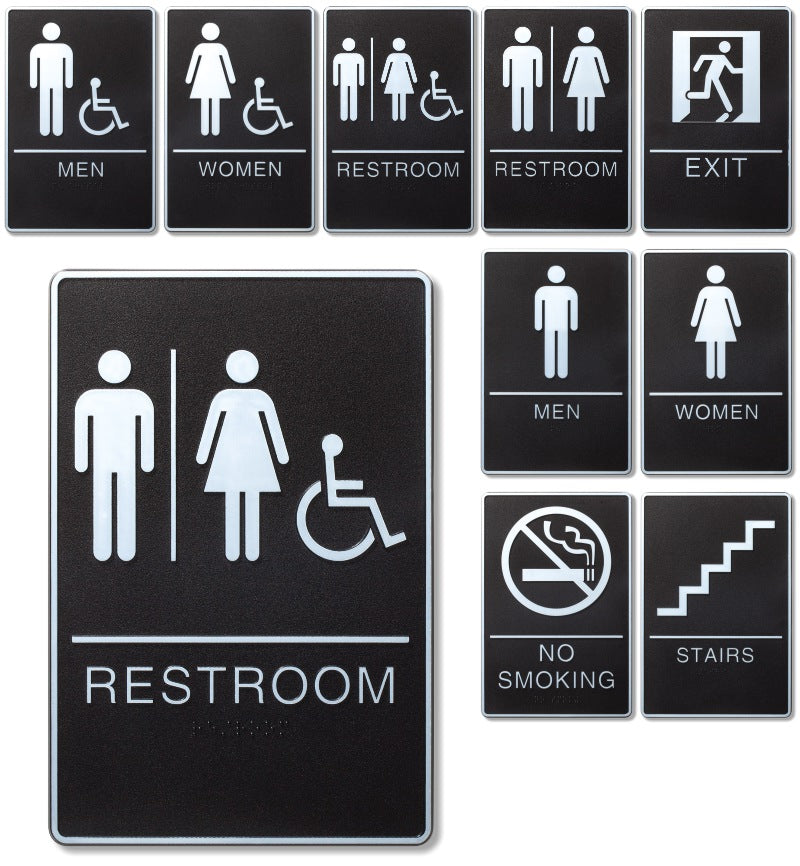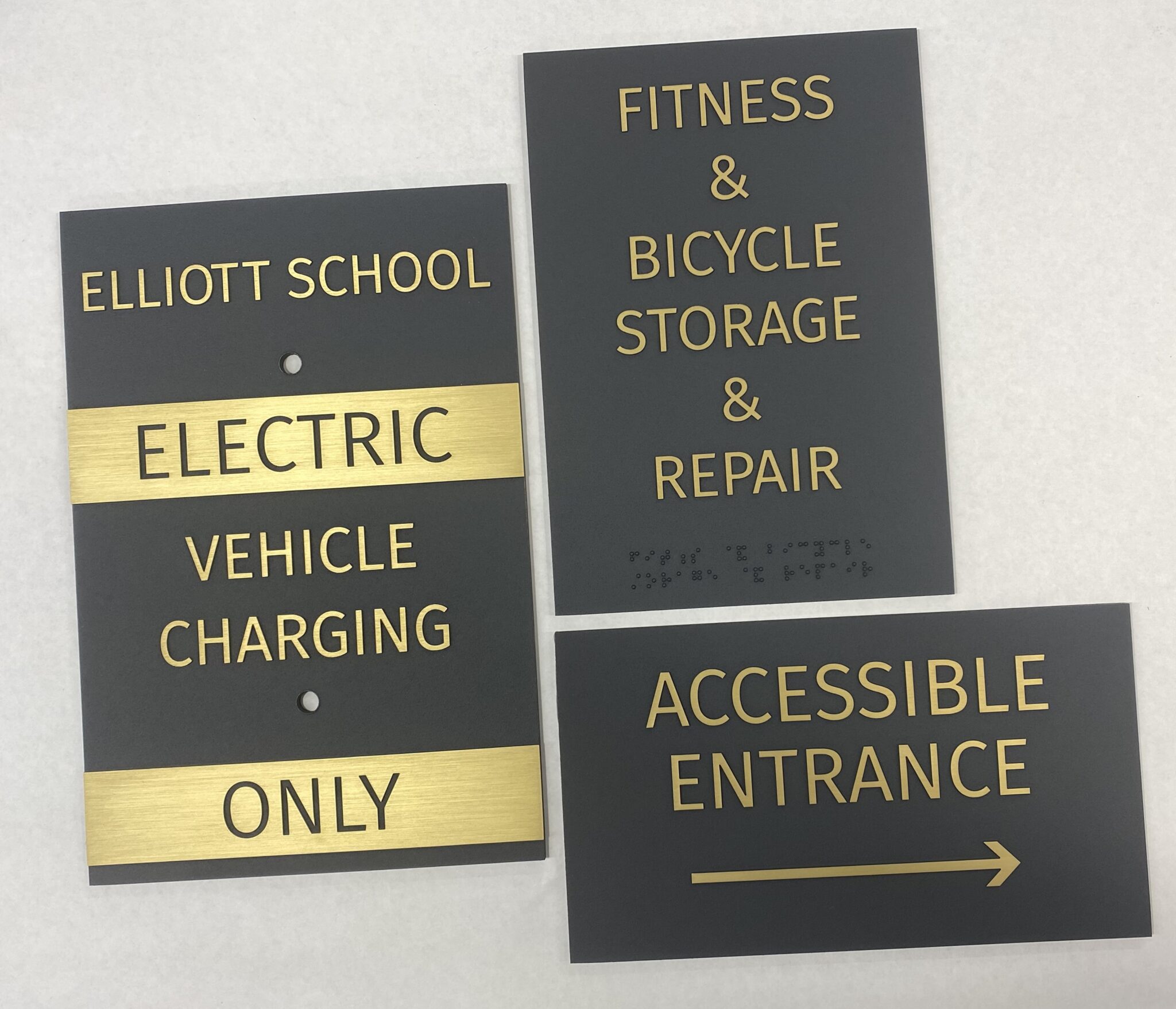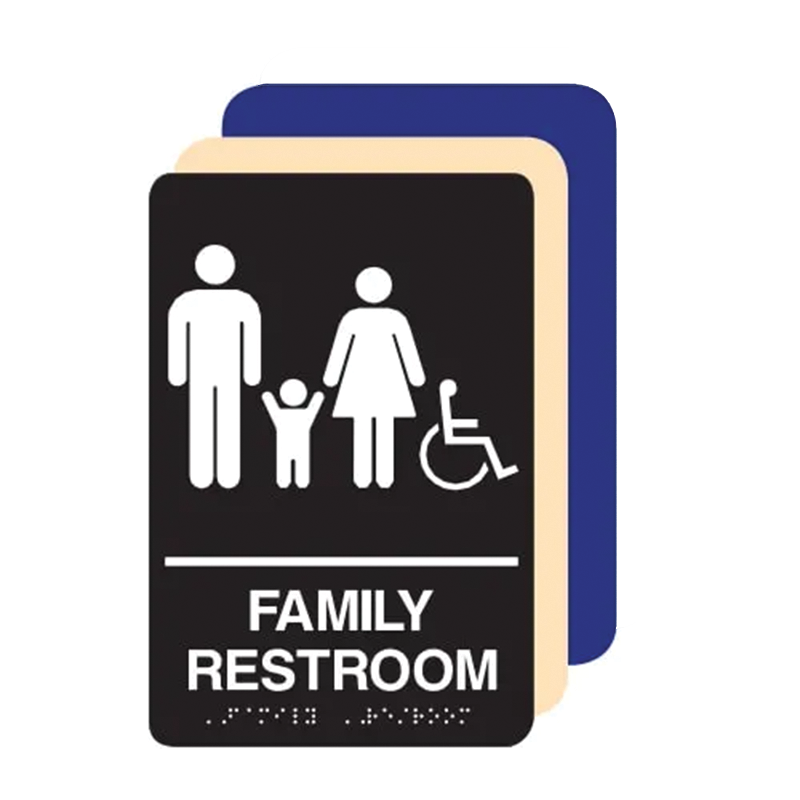A Comprehensive Guide to Choosing the Right ADA Signs
A Comprehensive Guide to Choosing the Right ADA Signs
Blog Article
Checking Out the Key Features of ADA Signs for Enhanced Accessibility
In the realm of availability, ADA signs serve as quiet yet powerful allies, making sure that spaces are inclusive and navigable for individuals with disabilities. By incorporating Braille and responsive aspects, these indications damage barriers for the aesthetically damaged, while high-contrast shade schemes and readable fonts cater to diverse aesthetic needs.
Significance of ADA Conformity
Ensuring compliance with the Americans with Disabilities Act (ADA) is crucial for promoting inclusivity and equivalent accessibility in public spaces and work environments. The ADA, passed in 1990, mandates that all public centers, companies, and transportation services fit individuals with handicaps, guaranteeing they enjoy the exact same legal rights and possibilities as others. Conformity with ADA standards not only satisfies lawful commitments yet also enhances an organization's credibility by demonstrating its commitment to variety and inclusivity.
One of the key elements of ADA compliance is the application of available signage. ADA indicators are made to make sure that individuals with disabilities can conveniently browse through spaces and structures.
Additionally, adhering to ADA regulations can minimize the danger of legal consequences and potential penalties. Organizations that fall short to comply with ADA standards may encounter fines or suits, which can be both destructive and economically burdensome to their public photo. Thus, ADA conformity is essential to cultivating an equitable setting for everybody.
Braille and Tactile Elements
The unification of Braille and tactile elements into ADA signs symbolizes the principles of access and inclusivity. These functions are crucial for individuals that are blind or visually impaired, enabling them to browse public rooms with greater self-reliance and confidence. Braille, a tactile writing system, is crucial in providing composed details in a format that can be easily regarded with touch. It is normally placed beneath the equivalent message on signage to guarantee that individuals can access the details without aesthetic aid.
Tactile aspects extend beyond Braille and include raised characters and symbols. These elements are created to be discernible by touch, allowing individuals to recognize area numbers, bathrooms, departures, and other vital locations. The ADA sets specific standards pertaining to the dimension, spacing, and placement of these tactile components to enhance readability and guarantee consistency throughout various environments.

High-Contrast Color Pattern
High-contrast shade plans play a critical duty in improving the visibility and readability of ADA signs for individuals with aesthetic disabilities. These systems are crucial as they maximize the distinction in light reflectance between text and history, making sure that signs are quickly discernible, a knockout post also from a distance. The Americans with Disabilities Act (ADA) mandates making use of particular shade contrasts to fit those with minimal vision, making it a vital aspect of conformity.
The effectiveness of high-contrast shades depends on their capability to stand out in various illumination conditions, including poorly lit atmospheres and areas with glow. Normally, dark text on a light history or light text on a dark history is utilized to accomplish optimal contrast. Black message on a white or yellow background gives a stark aesthetic distinction that aids in quick acknowledgment and comprehension.

Legible Fonts and Text Dimension
When thinking about the style of ADA signs, the selection of understandable fonts and proper message size can not be overstated. The Americans with Disabilities Act (ADA) mandates that fonts must be sans-serif and not italic, oblique, manuscript, very attractive, or of uncommon type.
According to ADA standards, the minimum message height should be 5/8 inch, and it needs to enhance proportionally with viewing range. Consistency in message dimension contributes to a natural visual experience, assisting individuals in browsing atmospheres successfully.
Moreover, spacing between lines and letters is integral to clarity. Adequate spacing stops characters from showing up crowded, boosting readability. By adhering to these criteria, designers can dramatically improve access, guaranteeing that signs offers its intended function for all people, no matter their aesthetic capabilities.
Efficient Positioning Methods
Strategic placement of ADA signage is crucial for making best use of ease of access and making sure conformity with legal standards. Appropriately located signs direct individuals with handicaps effectively, helping with navigation in public areas. Trick considerations include exposure, distance, and elevation. ADA standards stipulate that signs must be installed at an elevation in between 48 to 60 inches from the ground to ensure they are within the line of view for both standing and seated individuals. This typical elevation array is important for inclusivity, allowing mobility device individuals and individuals of varying heights to access info easily.
Furthermore, signs must be positioned surrounding to the lock side of doors to enable easy recognition prior to entrance. Consistency in sign positioning throughout a center boosts predictability, reducing complication and boosting overall customer experience.

Final Thought
ADA indicators play an important function in advertising ease of access by incorporating features that deal with the requirements of people with disabilities. Integrating Braille and responsive components ensures important details comes to the visually damaged, while high-contrast color pattern and clear sans-serif font styles boost presence throughout various illumination conditions. Efficient positioning approaches, such as appropriate mounting heights and tactical places, additionally promote navigating. These components jointly cultivate a comprehensive environment, underscoring the importance of ADA compliance in guaranteeing equal gain access to for all.
In the realm of availability, ADA indications serve as silent yet effective allies, making certain that rooms are comprehensive and navigable for people with handicaps. The ADA, passed in 1990, mandates that all public centers, companies, and transport services fit individuals with disabilities, guaranteeing they enjoy the exact same rights and possibilities as others. ADA Signs. ADA indications are developed to ensure that people with specials check this site out needs can easily browse with buildings and rooms. ADA guidelines stipulate that indications should be placed at a height in between 48 to 60 inches from the ground to ensure they are within the line of view for both standing and seated people.ADA indications play a vital duty in promoting access by integrating features that attend to the needs of individuals with disabilities
Report this page